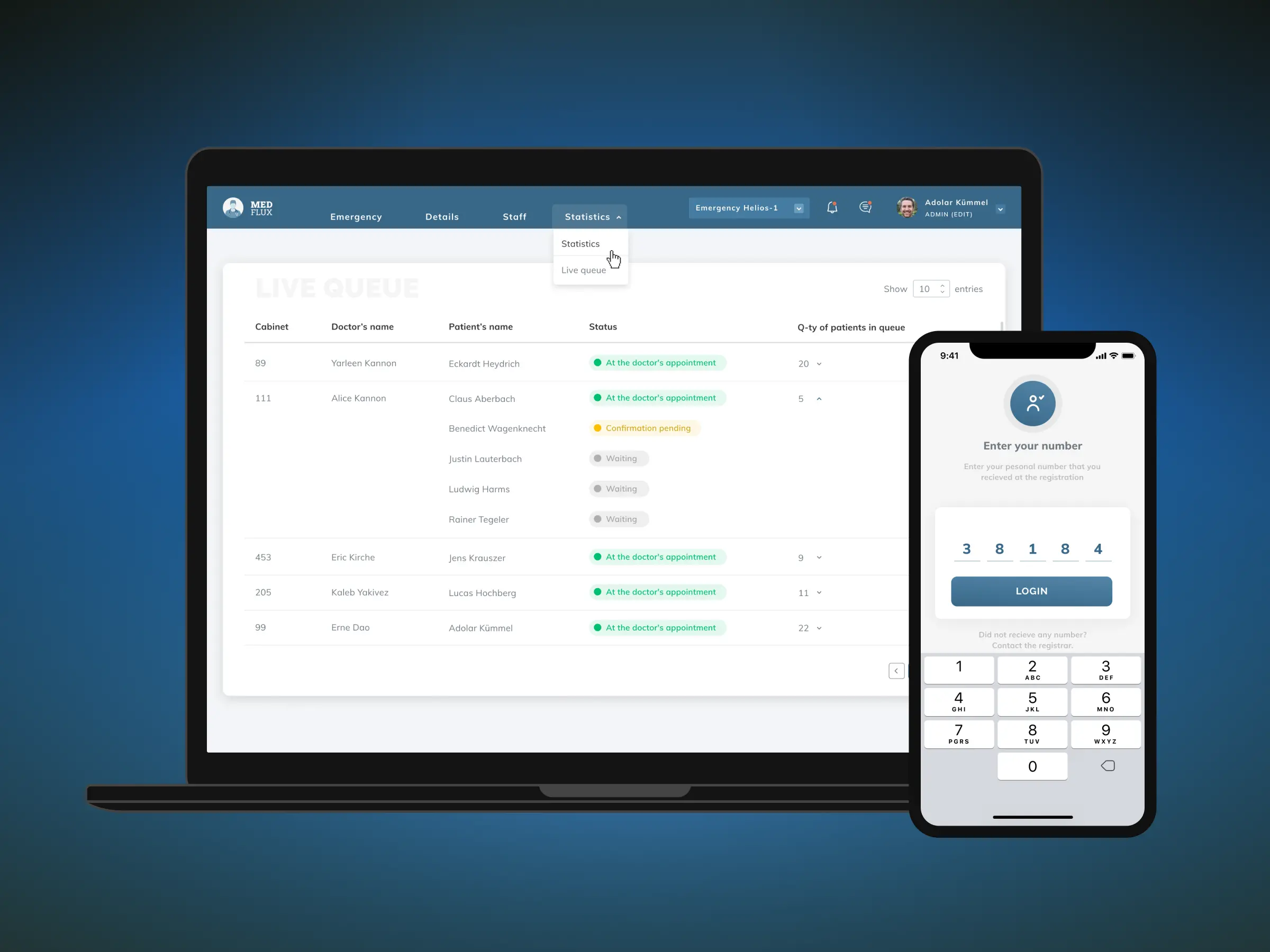Project Plan
Task
Custom healthcare platform and mobile app design and development
Team
Product Manager, UX Researcher, 2 Product Designers, 2 Back-end and 2 Front-end developers, QA
Duration
16 weeks
Scope
70+ screens and adaptive versions
Overview
MedFlux is a German medical startup located in Düsseldorf that helps private and state hospitals optimize their processes and reduce patients waiting time.
We partnered with MedFlux to design and develop a new, more effective appointment scheduling system for a hospital.
Our team has worked on a web application for doctors that would enable them to optimize their workload. We’ve also worked on a mobile application for patients that displays the appointment details, including the doctor’s name, appointment date, time, and hospital address.
Deliverables
- Product Design
- Branding
- Illustrations
- Animation
- App Design
Results
Through our collaboration, we delivered a solution that significantly cut patient waiting times. By improving the hospital’s scheduling system, doctors were able to spend more focused time with each patient thanks to better resource allocation.
Limeup developed a mobile app and a hospital TV interface to improve accessibility, making it simple for patients to register and schedule appointments, regardless of their level of digital proficiency. All things considered, this inclusive strategy increased efficiency.
The platform now supports over 1,500 video consultations daily with 99.9% uptime. AI-powered intake forms reduced onboarding time by 60%, speeding up the path to care.
Bookings for consultations increased by 45% when doctors were available in immediate access. Along with operating seamlessly in seven countries with localized content and currency support, the system also conforms with HIPAA and GDPR.
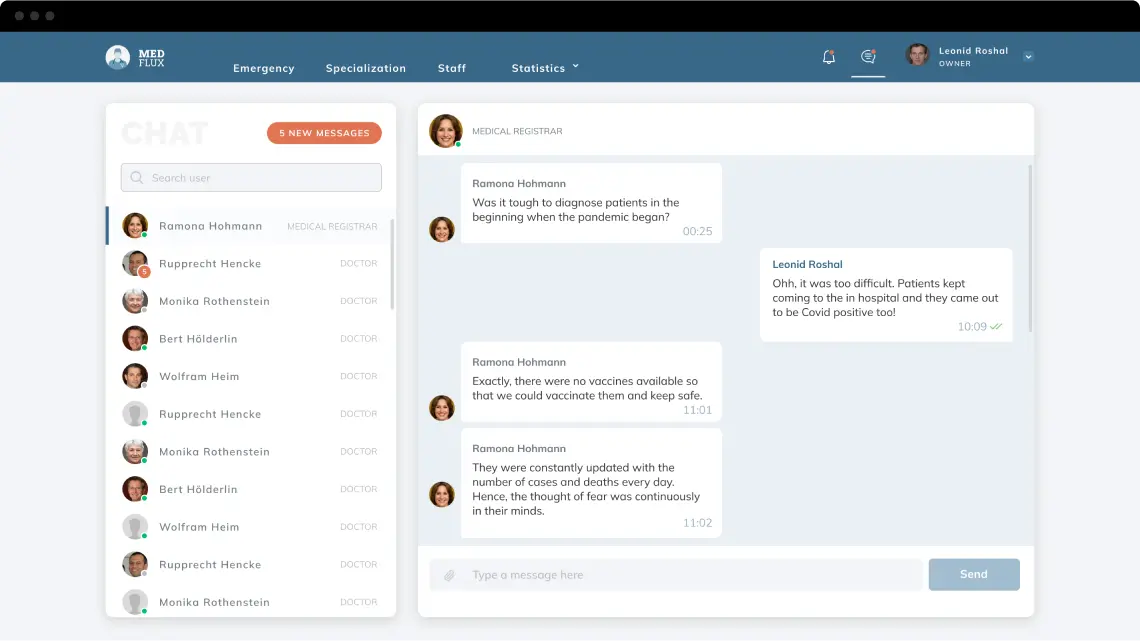
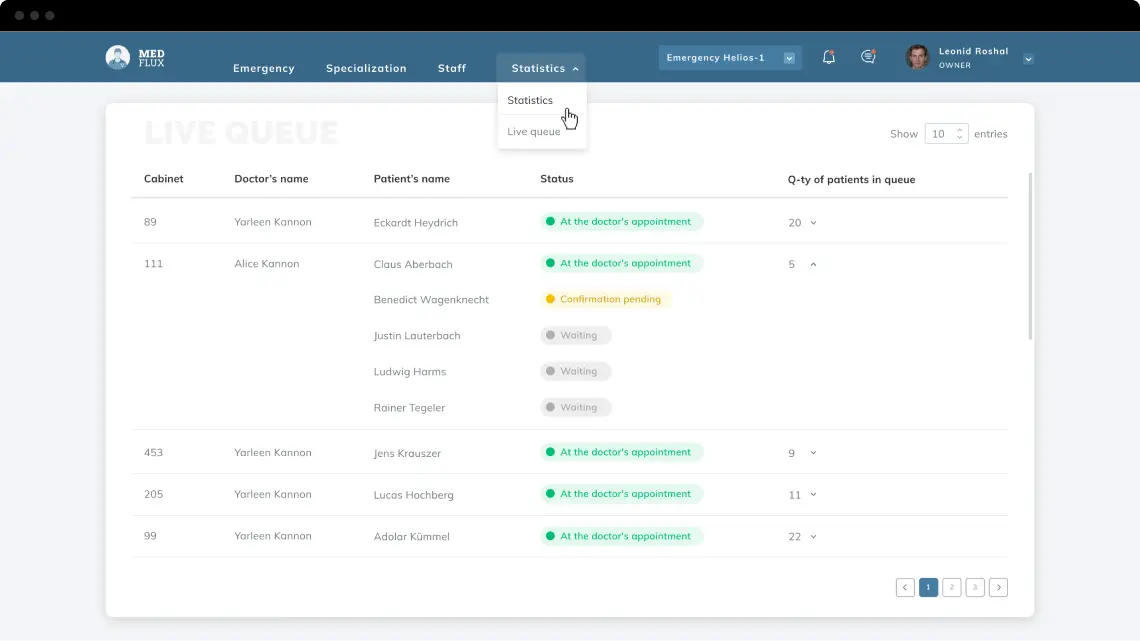

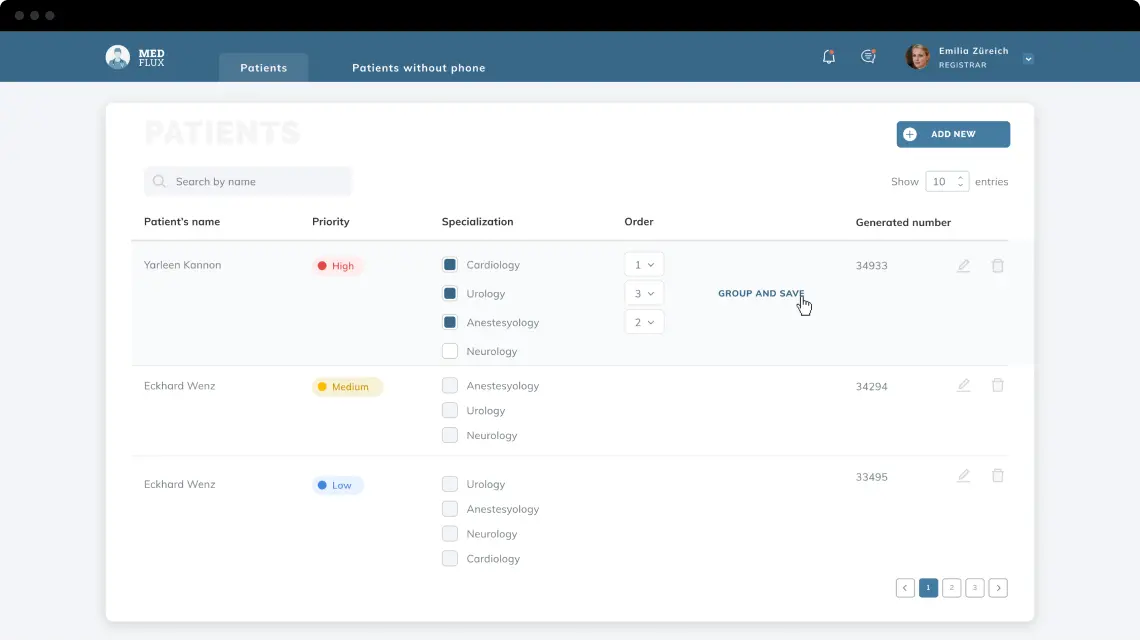
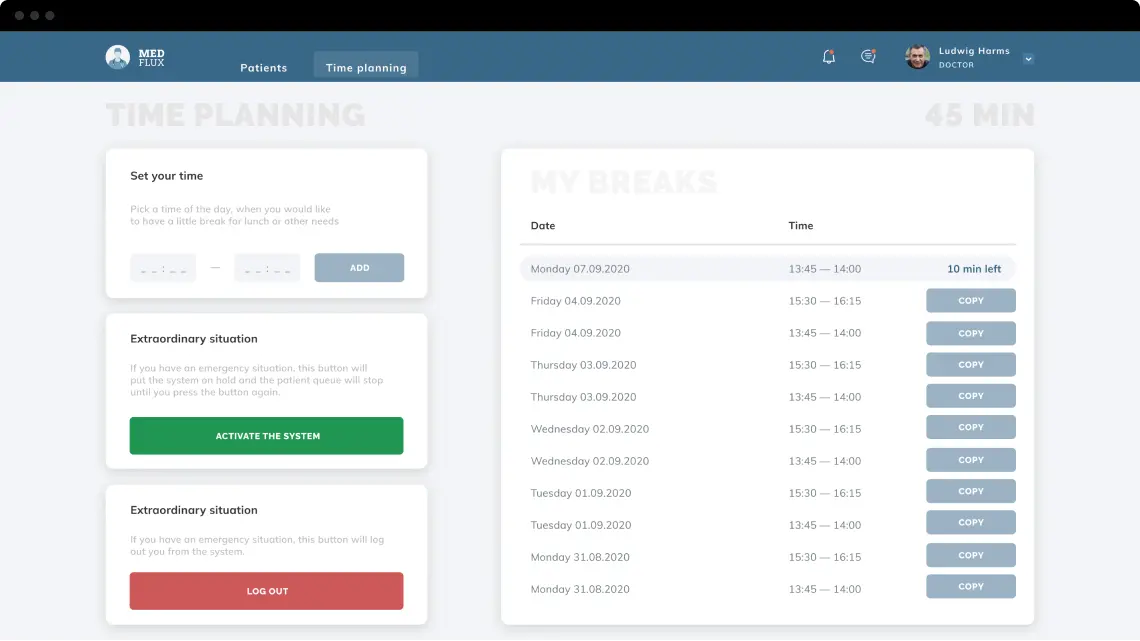

Information Architecture
A scalable and secure microservice architecture that has been optimized for real-time medical collaboration was put into place by our team. Patient data administration, appointment scheduling, live consultations, AI assistant support, and billing are all handled by the backend.
WebRTC facilitates peer-to-peer video conferences between physicians and patients, while WebSocket-based channels allow low-latency communication for virtual consultations. FHIR standards are followed in all health data activities with the goal of compliance and interoperability. A stand-alone administration portal provides admin functions.

Information Architecture

Security
Discuss your idea with our experts to define the perfect solution for your needs.
Platon Tsybulskiy
CTO


User persona

Age:44
Status:Married
Location:Berlin
Biography
![]() is an owner of a network of private hospitals in Berlin. He is very organized and hardworking. Recently, his clinic has become increasingly popular and the number of patients has increased significantly.
is an owner of a network of private hospitals in Berlin. He is very organized and hardworking. Recently, his clinic has become increasingly popular and the number of patients has increased significantly. ![]() is facing problems with time planning and staff management.
is facing problems with time planning and staff management.
Personality
Goals
- Save time and optimize processes
- Increase the productivity of employees
- Reduce waiting time for patient
- Track the efficiency of the equipment
Motivation
- Start saving time
- Optimize precesses
- Predict income
Needs
- Informative statistics
- Full control of work processes
- Easy to use and user friendly interface
- Good data security
Frustration
- Too much time spend
- Not enough information
- Complicated work process
- Few really statistics
User journey map
| Touch Points | Enter | Engage | Exit | Entend | |
|---|---|---|---|---|---|
| Touch Points |
|
|
|
|
|
| Research | Sign Up | Manage hospital | Achievements | Share experience | |
|---|---|---|---|---|---|
| User goals |
|
|
|
|
|
| User questions |
|
|
|
|
|
| Solutions |
|
|
|
|
|
Functionality
Limeup approached the platform with one goal: accelerate essential hospital operations without overcomplicating the user journey. From intake to resource management, every feature was crafted to support clinical staff and improve the patient experience behind the scenes.
The registration process
There is a simple and intuitive process for registering hospitals and adding doctors and their specializations. Medical registrars register patients and assign appointment priority based on their needs. The system then matches available doctors with patients automatically.
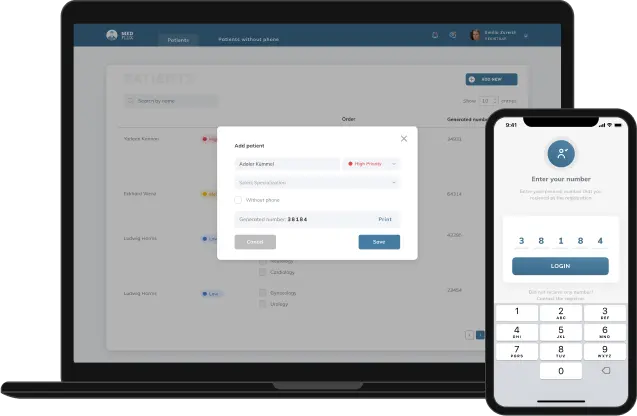
The live queue
The appointment scheduling system ensures that every doctor has three patients. So doctors are not overwhelmed, and patients do not have to wait for a long time. When the hospital staff confirms the registration, patients receive appointment numbers. As a result, the waiting line is shorter, and patients are informed about how long they should wait in a queue.

Statistics
The statistics show the productivity of each doctor and help decide how to allocate resources. This way, hospitals can distribute their resources more efficiently. For example, hospitals can hire more medical professionals if there are not enough doctors.
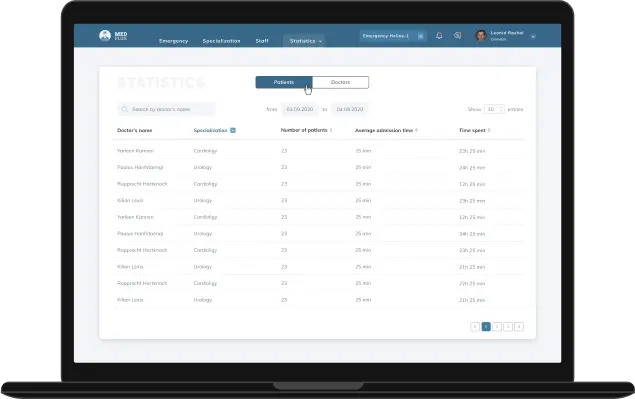
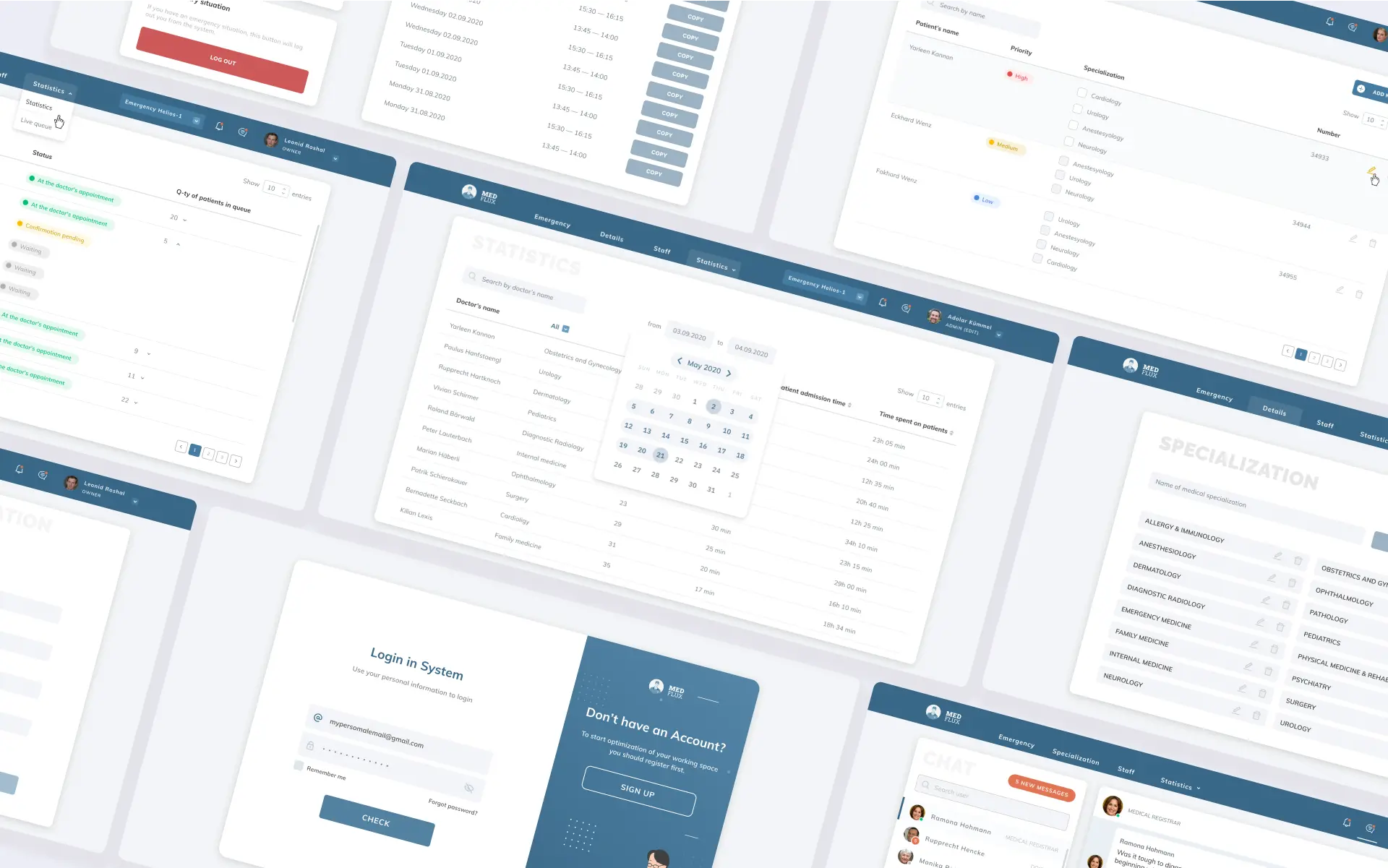
More success cases
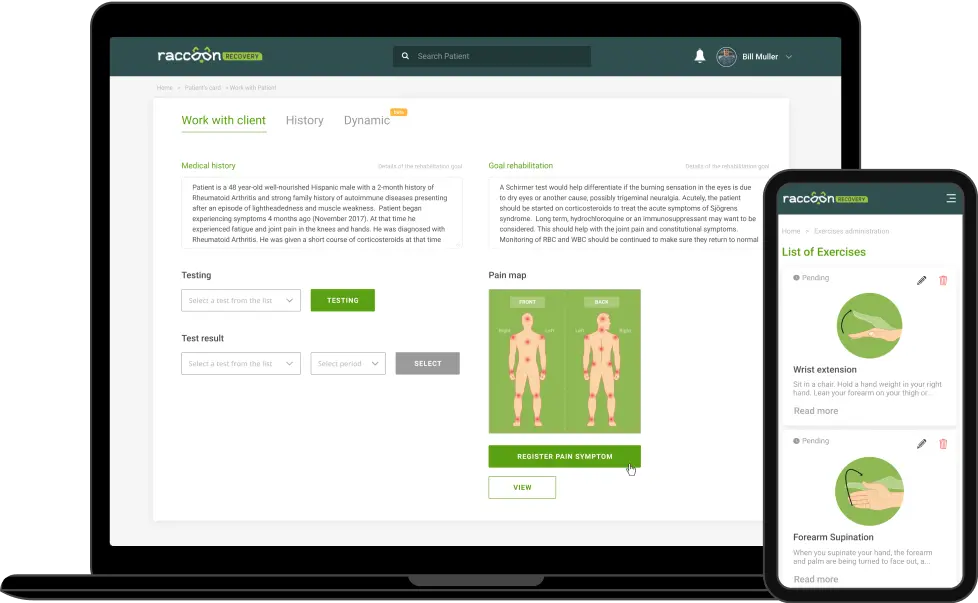
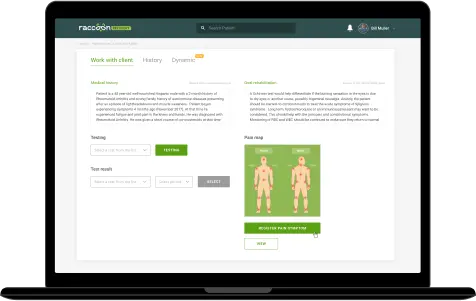
Create your product with us

Account Executive

Business Development Manager
